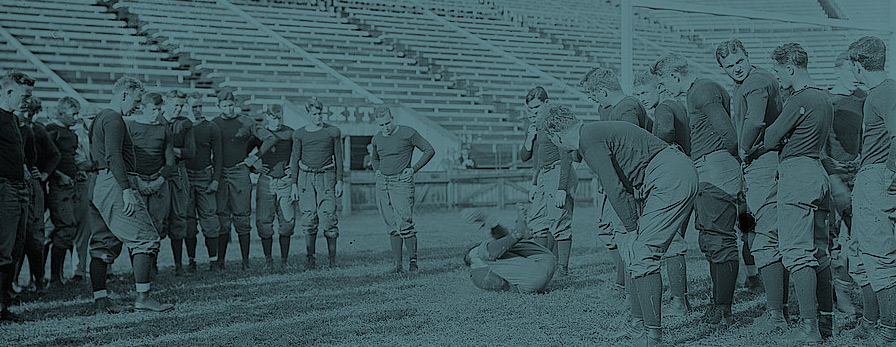The Football Bowl Association has engaged Winthrop Intelligence to compile a statistical examination of the 2012-13 Bowl Season, and present a third-party look at the state of post-season football. The FBA Media Guide provides information about 35 bowls all in one place.
Highlights for Winthrop Intelligence Readers:
For more than 100 years, College Football has played annual Bowl games.
“We are united in our common belief that the Bowl Experience is a tradition that is part of the American fabric,’’ Wright Waters, FBA executive director, said in 2009 when he served as chairman of the NCAA Football Issues Committee.
No conference lost money on bowls in the 2011-12 bowl season. The lowest net return was $1,066,190 to the Mountain West Conference, the highest $30,826,027 to the SEC. The five BCS games had a bowl payout of $192,004,432, with the 30 non-BCS games paying out $98,512,458. After expenses, intercollegiate football had a net revenue of $179,896,463.
More than 7,000 student-athletes participate in bowl games each season.
“In my playing career I had the tremendous opportunity to play in three bowl games,’’ Archie Manning, former Ole Miss quarterback and College Football Hall of Fame member, said. “I have a lot of great memories from my playing days, but looking back, the chance to spend a week experiencing a new city with all of my teammates is something that will always stand out in my mind.’’
There are more than 13,800 band members, the more than 100,000 additional performers who take part in the entertainment and other productions associated with the games, and more than 1,280 cheerleaders who support their teams and fan bases.
Most notably, there are more than 1.8 million fans who celebrate their teams, the games, the bowls and the traditions created every postseason.
Each year, the spotlight placed on the 28 communities translates into more than $1 billion in economic impact and each of the 28 communities receives millions of dollars in media exposure.
“The Allstate Sugar Bowl’s support of City Park and Tad Gormley Stadium has been essential to our recovery from Hurricane Katrina. The money they have pledged to our organization has been used to upgrade locker rooms, rest rooms and other facilities, which have enabled us to continue to serve many of the high school football teams in the city at a high level.”– Bob Becker, CEO of City Park, New Orleans
Attendance at bowl games – more than 1.8 million fans attended bowl games last season – and regular-season games is on the rise.
There is an annual payout of approximately $281 million to the participating schools. In the past 10 years alone, more than $2 billion has been paid out. A conservative estimate, especially considering the impact of the upcoming four-team playoff in terms of revenue production, is there will be a payout of more than $2.6 billion over the next 10 years.
Most bowls are non-profit organizations that are associated with several local charities and civic organizations. The popularity of college football and the interest in bowl games often increases the exposure for these organizations, which leads to increased donations and contributions.
Wright Waters, Executive Director of the FBA, was presented with the National Football Foundation’s Legacy Award for lifetime achievement in November of 2011. Earlier this year, the Sun Belt renamed its regular season football championship award as the H. Wright Waters Trophy.
Fun Facts:
- The Tournament of Roses Parade actually predates the Rose Bowl Game, having been staged for the first time on Jan. 1, 1890. The football game was originally added in 1902 to help fund the cost of staging the parade.
- In 1935, the first wire photo ever transmitted across the U.S. was from the first Orange Bowl game. It was transmitted by the Associated Press.
- The Tostitos Fiesta Bowl trophy has the unique features of an inlaid compass in the base, an internal LED lighting system and its base and platform carved from marble. It stands almost four feet high and weighs 200 pounds, and has 38.6 karats of diamonds encrusting the football stripes.
- The Sugar Bowl has featured a Heisman Trophy winner 15 times in its history, as well as 128 College Football Hall of Famers — 82 players and 46 coaches. The bowl has also hosted 22 national champions in its history.
- The 1955 Gator Bowl was the first bowl to be televised coast-to-coast.
- The Chick-fil-A Bowl has been exclusively an ACC vs. SEC matchup for 20 years, the longest matchup of the two conferences in any bowl
- The Music City Bowl is one of the few nationally in which both a kicker and a punter have won the MVP award.
- Maaco Bowl. In 2002, Katie Hinda of New Mexico became the first woman to play in an NCAA FBS game when she entered during the first quarter to attempt an extra point. The try, which was low, was blocked by UCLA during the Bruins’ 27-13 victory.
- The Pinstripe Bowl is the youngest of the 35 bowl games, having only been played for two years and inaugurated for the 2010 season.




